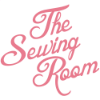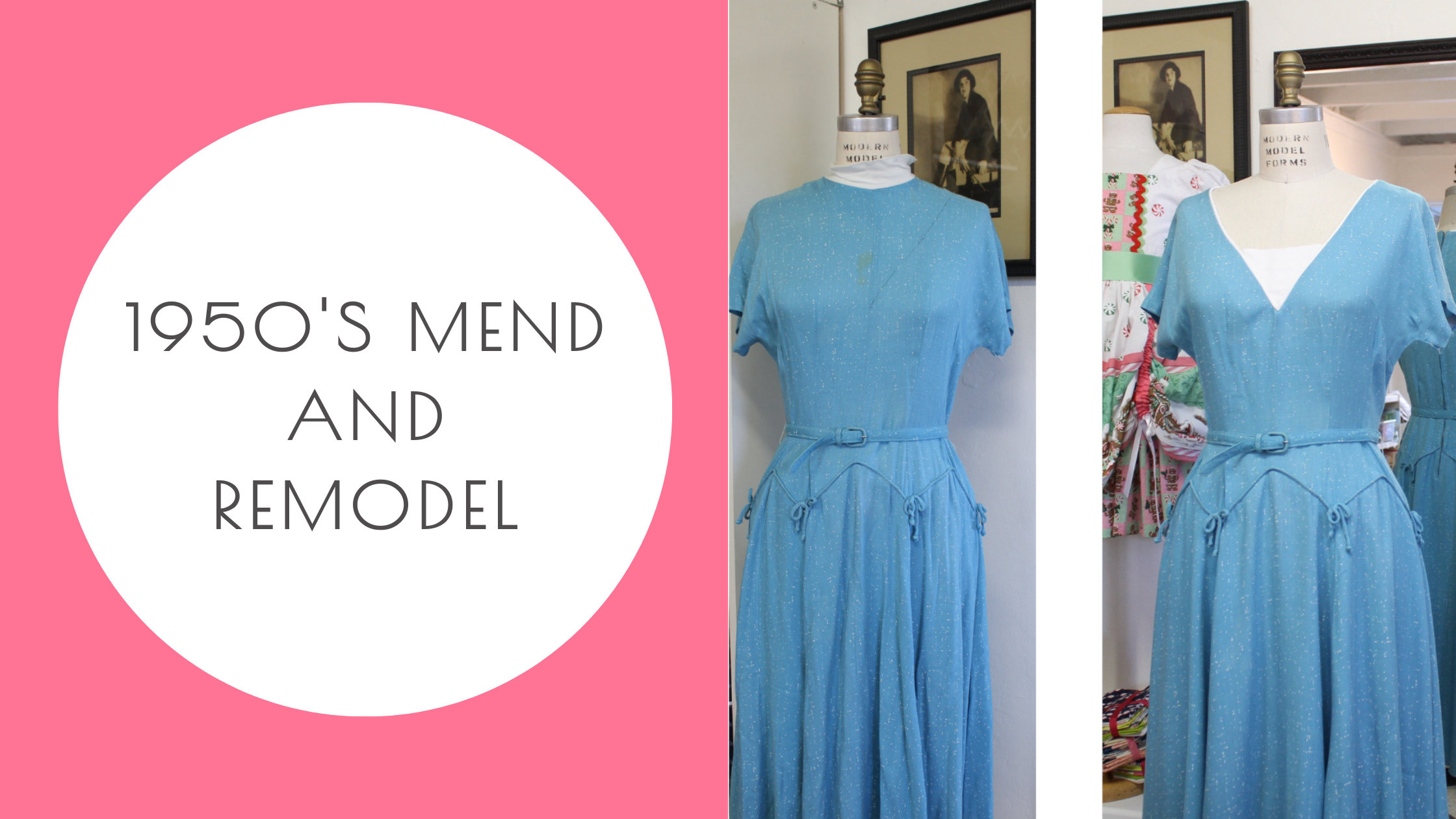This is a quick little post to share with you my most recent garment renovation. Last year, my friend Joy gave me this darling vintage 1950’s turquoise dress. It was stained (on the front bust and neckline) but in decent shape otherwise. It’s been hanging on my rack waiting for a makeover. I knew right away, that it needed a neckline overhaul, so that it what happened after I finally decided to tackle it.
Here you can see that the dress has a yellow stain in the front of the garment just above the bust. It also had a growing hole on the left shoulder seam. Yikes.
I’m really curious about this neckline. The collar, which is very high, is peppered with what looks like stitch marks from a lot of snaps. Did it have a detachable fur collar? I’m imagining something glamorous like that, but who knows. It also has a big stain on the inside of the neck.
I decided the collar needed to come off and was seam ripped away from the garment as soon as I could get to it.
I marked the new neckline with a gel pen, while it was still on the dress form. After taking it off the form, I folded the garment in half at the center front, and matched the shoulder seams before cutting the neckline through both right and left side layers.
I needed to make a neck facing and a neck insert piece. While on the dressform, I measured the neck insert to be 5 inches wide and 4 inches deep finished. To create that piece, I drew that triangle on a piece of paper and added seam allowance. The neck edge would be on the fold so the insert could be a finished edge along the neckline and two layers thick.
For the facings, I traced off the necklines both front and back and marked the shoulder seams with a tracing wheel. Each facing piece was made separately, 2” wide (plus 1/4” seam allowance along the outer edge and 1/2 “ seam allowance at the shoulder). The front facing is cut on the Center Front fold and the back facings are two individual pieces.
I cut the facings and neck insert piece out of linen and the facings again, out of interfacing. After fusing the facing pieces to the interfacing, they were joined front to back at the shoulders.
The part that really tripped me up was the order with which to sew the neck insert, the piping, and also the facing. The piping needs to be sewn to the neckline first. However, it should be noted that the the dress neckline is not stable and no amount of stay stitching was going to make it so. I had to sew the piping to the facing first. But then I realized that the neck insert had to be between the piping and the facing. This meant that I ended up sewing the piping to the facing leaving it open at the center front neck, where the insert would go. I then pinned the neck facing (now with piping attached) to the dress around the neckline. as I came to the center, I pinned the insert between the piping and the facing and then to the neckline. This was a process. It did not happen in one go. I think I seam ripped and re-stitched several times before getting it right.
Then, there was a bit of trial and error with the back neck. I needed to have the piping finished off nicely at the CB and just couldn’t get it right. In the end, I figured it out, but it took several tries. So, it goes to show that sometimes, we just need to keep trying till we figure it out. Sometimes, one just needs to seam rip, try something and seam rip again. And that’s ok. It may be super frustrating, but getting it right is the goal and sometimes, that just takes time and perseverance.
I really like this dress now, much better than before. It needs to be tried on, as I’m not sure it’s quite my size. If it is, I think I’ll keep it. It could be dressed up with some red accessories (and hair flowers right?) for a holiday dress or just worn as a day dress with some white t-strap sandals. It’s really versatile.
And if you are interested in learning more about mending and fixing old vintage dresses, you might want to check out our Mending Matters Classes. They will be held Online via Zoom on the last Wednesday of each month from 6-8pm PST. You can find out more & register by following this link - Register.
That’s it for now. Until next time. Happy Sewing!
xo Jennifer








